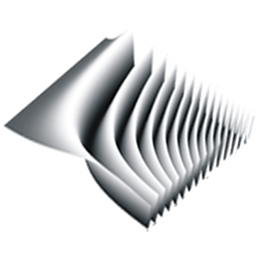|
Size: 638
Comment:
|
Size: 2512
Comment:
|
| Deletions are marked like this. | Additions are marked like this. |
| Line 2: | Line 2: |
| ||<<TableOfContents>> || {{attachment:ctf.png}} || | |
| Line 3: | Line 4: |
| To get familiar with how e2ctf.py works, try separating the way you using e2ctf.py into three stages: | == CTF Correction in EMAN2 == CTF correction in EMAN2 is performed on boxed out particles. The entire framework is incompatible with the idea of doing per-micrograph CTF correction. There is a [[EMAN2/Theory/CTF|theory section]] discussing how this works in detail. In general, you box out particles with a fairly liberal box size (about 1.5 - 2x the smallest possible box that would fit your particle). The central part of each box (the particle) contains signal + noise, the edge of the box contains just background noise. Separating these two regions permits an accurate estimate of the spectral signal to noise ratio of the particles in each image, and also permits accurate assessment of the defocus and other CTF paramters. This SSNR is an integral part of later CTF correction procedures, and can ONLY be computed from particles, not entire micrographs. While the core CTF infrastructure could in principle be used to simply phase-flip a whole micrograph, none of the existing user-level programs support this operation. |
| Line 5: | Line 15: |
| == Auto fitting == e2ctf.py 1.img --voltage=200 --apix=2 --cs=3.2 --auto_fit |
== Using e2ctf.py == Normally this program would be used through the e2workflow.py interface. You can call it manually, from the command-line as well, of course. |
| Line 8: | Line 19: |
| == Fine tuning == | e2ctf.py is generally used in 3 stages |
| Line 10: | Line 21: |
| (save any changes you make with the Save Parms button) e2ctf.py 1.img --gui |
=== Auto fitting === {{{ e2ctf.py 1.img --voltage=200 --apix=2 --cs=3.2 --autofit }}} This runs auto CTF parameter determination, storing the result in a local database. |
| Line 13: | Line 27: |
| == Write output == | === Manual (GUI) parameter check === {{{ e2ctf.py 1.img --gui }}} Now that you have determined the parameters with the first command, have a look at the results in the interface. Tweak if necessary. Save any changes you make with the Save Parms button === Write output === {{{ |
| Line 15: | Line 36: |
| }}} Finally generate output. The output will be in the particles directory. |
|
| Line 16: | Line 39: |
| The output will be in the particles directory. Also, you can supply more than one image as input to e2ctf.py. |
== Processing multiple images simultaneously == e2ctf takes multiple images as input, so you can use commands like this: |
| Line 19: | Line 42: |
| You can combine more than command would have worked if you had used a command like this: | {{{ e2ctf.py *.hdf --voltage=200 --apix=2 --cs=3.2 --autofit e2ctf.py *.hdf --gui e2ctf.py *.hdf --phaseflip --wiener }}} == Combining stages into a single command == You can combine more than one of the e2ctf processing stages into a single command. For instance you can run automated fitting and open the GUI with a single command like this: |
| Line 21: | Line 50: |
| e2ctf.py 1.img --voltage=200 --apix=2 --cs=3.2 --auto_fit --gui | {{{ e2ctf.py 1.img --voltage=200 --apix=2 --cs=3.2 --autofit --gui e2ctf.py *.img --voltage=200 --apix=2 --cs=3.2 --autofit --gui }}} |
e2ctf
Contents
|
|
CTF Correction in EMAN2
CTF correction in EMAN2 is performed on boxed out particles. The entire framework is incompatible with the idea of doing per-micrograph CTF correction. There is a theory section discussing how this works in detail. In general, you box out particles with a fairly liberal box size (about 1.5 - 2x the smallest possible box that would fit your particle). The central part of each box (the particle) contains signal + noise, the edge of the box contains just background noise. Separating these two regions permits an accurate estimate of the spectral signal to noise ratio of the particles in each image, and also permits accurate assessment of the defocus and other CTF paramters. This SSNR is an integral part of later CTF correction procedures, and can ONLY be computed from particles, not entire micrographs. While the core CTF infrastructure could in principle be used to simply phase-flip a whole micrograph, none of the existing user-level programs support this operation.
Using e2ctf.py
Normally this program would be used through the e2workflow.py interface. You can call it manually, from the command-line as well, of course.
e2ctf.py is generally used in 3 stages
Auto fitting
e2ctf.py 1.img --voltage=200 --apix=2 --cs=3.2 --autofit
This runs auto CTF parameter determination, storing the result in a local database.
Manual (GUI) parameter check
e2ctf.py 1.img --gui
Now that you have determined the parameters with the first command, have a look at the results in the interface. Tweak if necessary. Save any changes you make with the Save Parms button
Write output
e2ctf.py 1.img --phaseflip --wiener
Finally generate output. The output will be in the particles directory.
Processing multiple images simultaneously
e2ctf takes multiple images as input, so you can use commands like this:
e2ctf.py *.hdf --voltage=200 --apix=2 --cs=3.2 --autofit e2ctf.py *.hdf --gui e2ctf.py *.hdf --phaseflip --wiener
Combining stages into a single command
You can combine more than one of the e2ctf processing stages into a single command. For instance you can run automated fitting and open the GUI with a single command like this:
e2ctf.py 1.img --voltage=200 --apix=2 --cs=3.2 --autofit --gui e2ctf.py *.img --voltage=200 --apix=2 --cs=3.2 --autofit --gui

